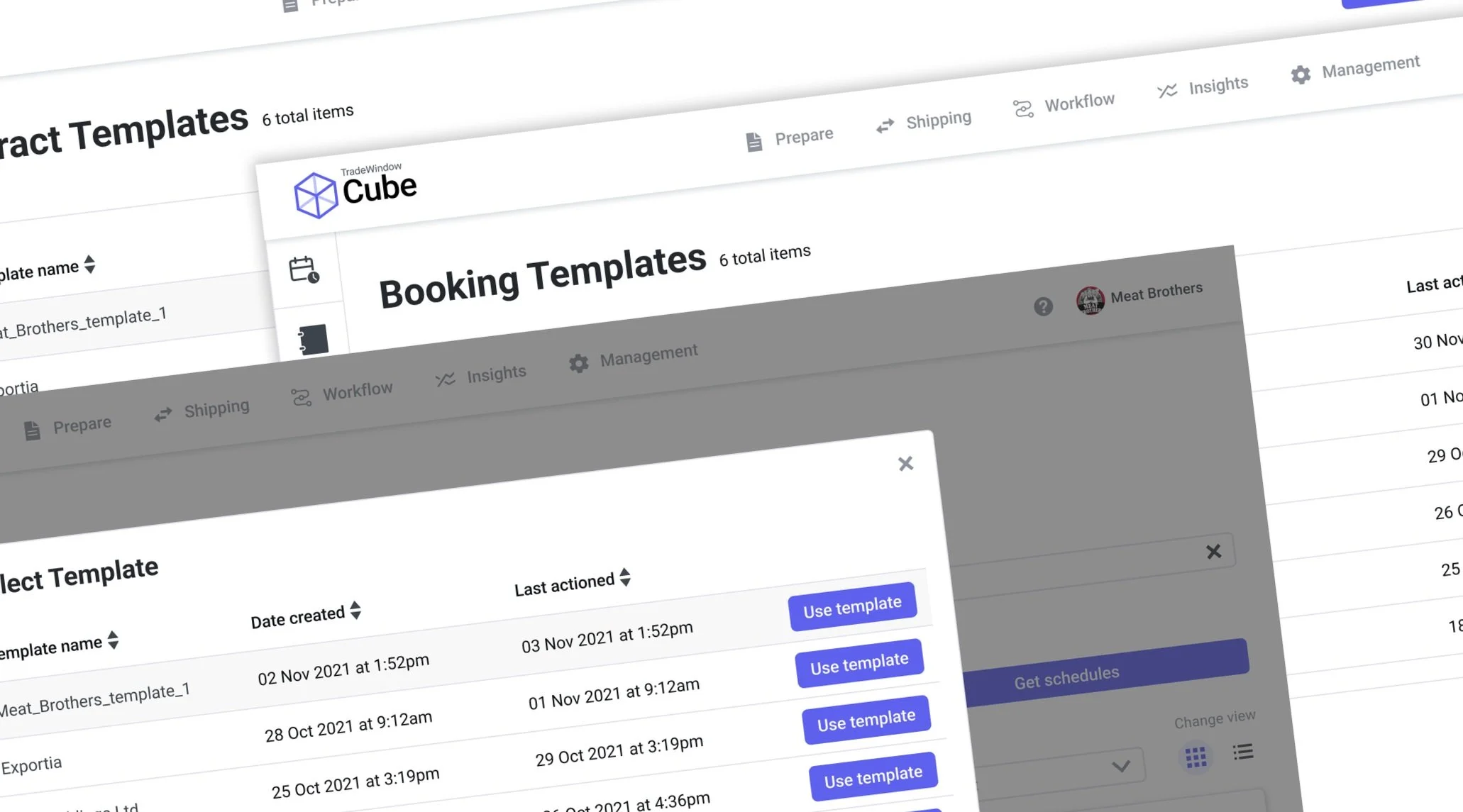
Faster workflows with Bookings + Contracts Templates
Trade is a complex process involving multiple stakeholders across different timezones. The process relies on privacy, accountability and document production from these stakeholders.
TradeWindow provides an aggregator service through Cube, for seamless integration between different stakeholders from Shipping to Retail making this truly a Farm to Plate solution.
I joined the business as the Lead CX/UX Designer. My role was centered around optimising the experience of the of individual products and connecting the product silos for a seamless CX leaving fewer mandates to the users’ workflow.
Background + Context
TradeWindow’s Cube enables the users to browse through schedules to create bookings and build contracts to implement the trade.
Trusted collaboration is made possible using an enterprise-grade security underpinned by blockchain technology. Permissioned parties can view and edit, with actions recorded on an immutable audit trail. Cube is design to connect all parties through integration into incumbent systems used in each part of the supply chain.
Opportunity
A large export business in NZ processes over 15 trades a week, each requiring different document sets, and a range of participants with customised permissions. Faster workflows and efficient reliable systems were required to enable these trade volumes.
Having seen the complexities in their workflows, we built templates for these pro-users to create bookings and contracts quickly.
Defining the Epics
As a bookings office personnel, I would like to be able to browse specific schedules and process bookings faster so I can save time by not browsing through the large data and list of options.
As a contracts office personnel, I would like to be able to create actionable contracts faster so all frequent trade participants can start their workflow sooner and I can save time by not browsing through the large data and list of options.
Locus of Control
Having built the journey maps for these trade participants before, we thought we had a deep understanding of their trade process.
As TradeWindow acquired more customers, we surfaced the further inconsistencies in their processes. I learnt from the sales and CS teams that templates would help add to the customer delight but the templates had to accomodate the customers’ individual workflows.
Locus of Control
I want to do things my way
Trust
I want to know you know me before you get my trust
Trust
For a product to win the trust of a customer, they want to know that they can do what they have been doing already, only faster and more efficiently.
Pro-users have an external locus of control. The nature of their product operations is a result of the organic improvements made to the earlier manual process over time.
Locus of control and gaining user trust were considerations I kept in mind while building the user flows of the templates.
Process and Techniques
Using techniques bring an instant structure to the conversations. I am a proponent of the Double Diamond process to bring stakeholders together in the convergent phases and allow for focussed, singular, contributory work in the divergent phases of the process.
What did I do?
Content Audit
Process Map
Prototypes
Design System
User Flow
UI Delivery
How did I do that?
From experience, deliverables and artefacts developed iteratively in the Double Diamond process do not lose their context easily. They remain meaningful and fit the changing requirements throughout the lifecycle of the project.
Whether the artefacts are created concurrently with other pieces or consecutively, the framework attempts to add a method to the conversations and provides traction to the design project.
Content Audit
From the list of tasks and artefacts mentioned above, doing a thorough content audit for both bookings and contracts template structures helped us gather the receptive jobs for the users, the templates aspired to eliminate.
The strategic timing of this project on the roadmap made the discovery process simple.
We had a series of jobs the users would perform to create a booking or a contract.
We had built user controlled preferences that would limit the data set queried and surface limited list options for the users to choose from.
I had established great working relationships with the customers and developed a deep understanding of their process from the previous journey mapping workshops.
I was therefore able to make decisions fast, heuristically, making meaningful use of the stakeholders’ time.
Working with Constraints
Between Iterations, I maintained a repository of the constraints that would need clarifications from the relevant internal stakeholders.
Developing UI early, incrementally and iteratively helped explain the scenarios optimally during the conversations with engineering.
These conversations throw light on the proposed solutions and test their feasibility early and often.
Accessing Templates
Auditing the content from both, create bookings and contracts flow gave us the precise fields we could incorporate in to the template.
However understanding the precise junctures at which the users would require access to templates would change depending on the flow of the trade—i.e whether they create a booking before the contract or vice versa.
We then adapted the existing journey by making alterations and adding multiple starting points to the beginning of the journeys.
In addition, we designed template management within the respective applications for the user to create, edit, save, delete the templates.
Managing Templates
(Create, Edit, Save, Delete)
The starting points we discovered earlier led to two flows for template creation:
Creating a new template that can be later used in a contract
Saving an existing contract as a template which can be used for other contracts later
Prototypes and Evaluative Tests
As our confidence grew in our offering, we began task testing with the customers.
While using templates while creating a booking or a contract was mandatory.
As a scaling product, I recruited test participants carefully to keep a balance between the customers who had requested these features and those who had not specifically asked for it.
The users themselves were grouped on the basis of years in the job. I wanted to eliminate the perceived threat of using technology in a paper based practice. Although templates were not directly replacing a paper based practice and were only simplifying a booking or contract creation flow, the business was sensitive and felt the need for this validation at all tests conducted.
Test Process
To ensure success of a test project, participant engagement throughout the duration of the test is paramount. I therefore refrain from testing large tasks in an unmoderated format.
Depending on the length of the task, limiting the time allotted keeps engagement levels high. I therefore range the task duration between 5 to 20 seconds.
End to end tasks (larger tasks) can take significantly long are best tested in a moderated environment. When possible, I travel to the user’s site accompanied by a member of the sales or customer success team. The findings from these tests are not measured directly in a numerical metric but qualitatively, by empathetically observing the participants navigate through the prototype to accomplish the task.
Test Findings
During the tests I realised, after some use and further down the work trail, the users had trouble distinguishing whether they were working with the template of a contract or booking or a specific contract or booking.
This was so because there we had maintained the UI structure of the templates (barring a few exceptions) for leveraging the existing familiarity in the users mental models.
By making minor changes to the colour of the opacity backdrop behind the modals in the CSS, we could design signifiers that made this distinction clear for the users.










